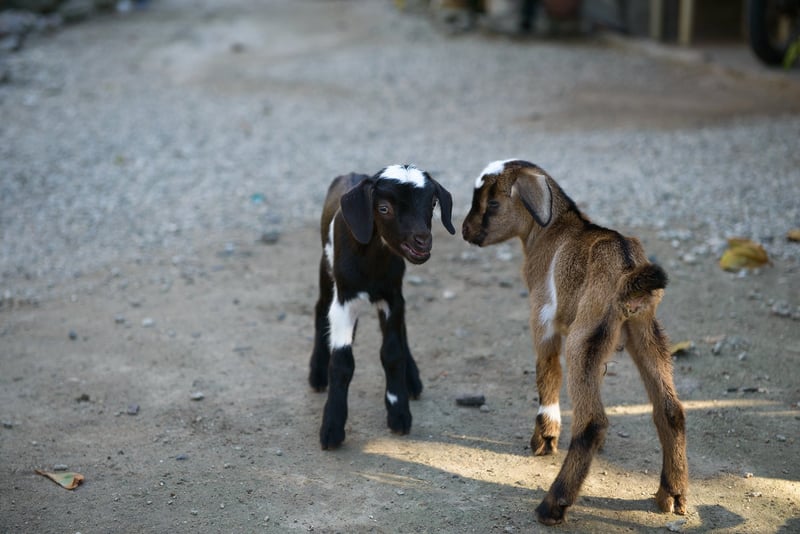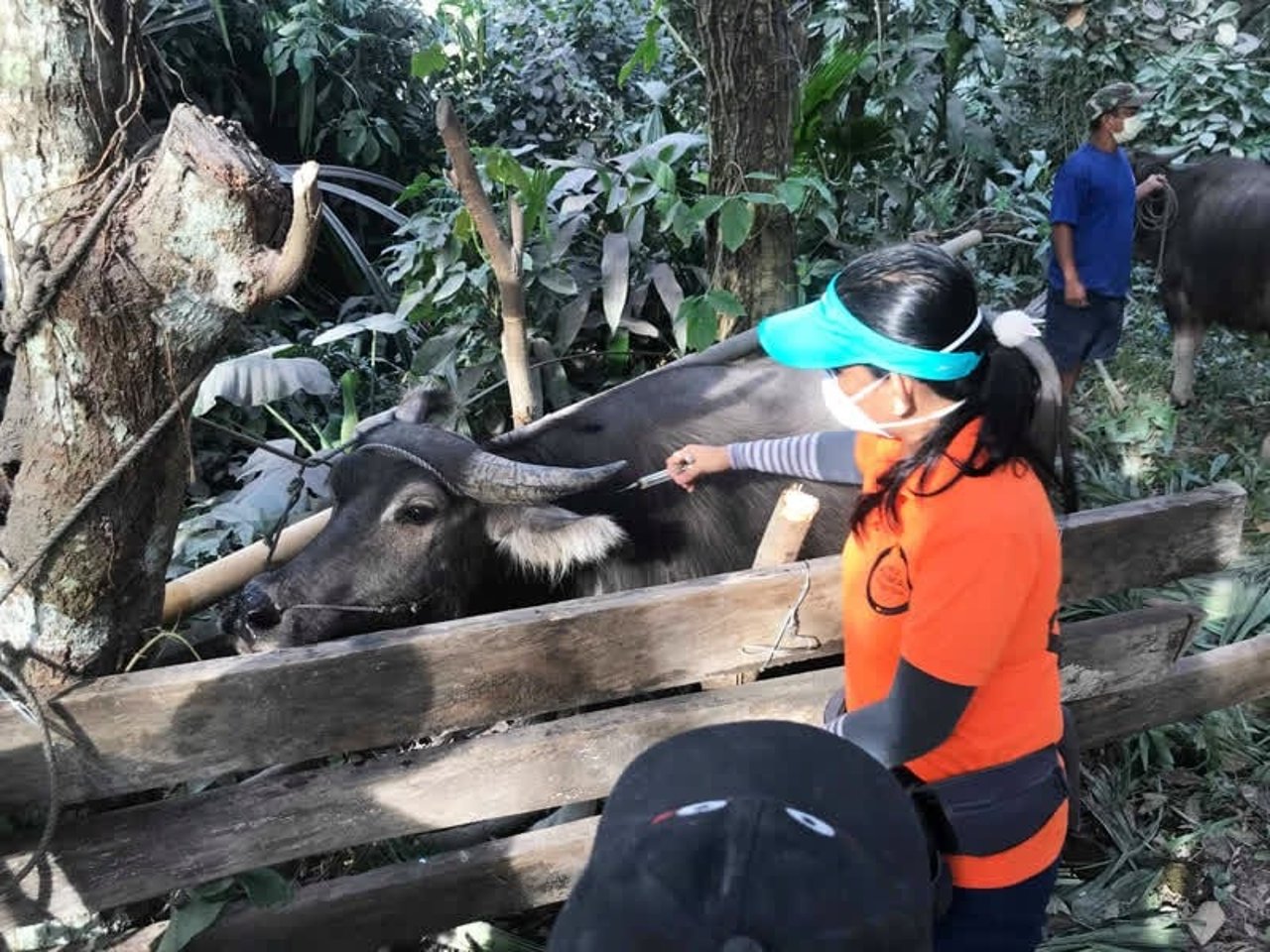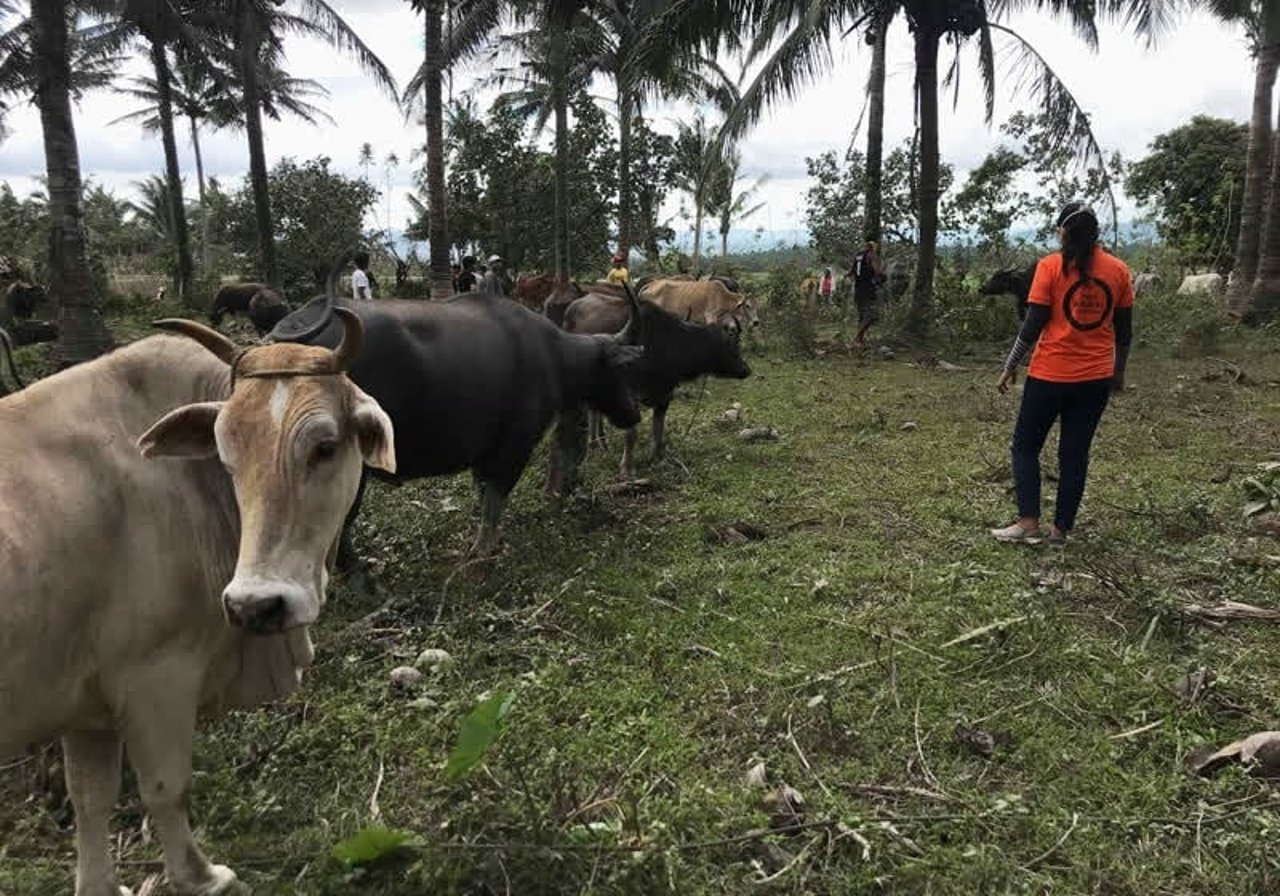
The volcano began erupting on January 13th, forcing the immediate evacuation of people within a 5 mile radius
Our Disaster Liaison Officer (DLO), Dr. May Christine Espiritus, is helping animals affected by the sudden and violent eruption of Mount Mayon, and identifying other possible emergency needs springing from the event.
Animals have been burned, injured from inhaling or ingesting ash, and left behind as shelters were unable to accept animals.
Our team, led by Dr. May, is on the ground helping 1,900 animals in the danger zone.
Our Disaster Liaison Officer (DLO), Dr. May Christine Espiritus, visited the Mount Mayon region to treat animals affected by the sudden eruption.
Dr. May shared this account of her first day there, “Today was the most exhausting day I've had this year. There are so many animals in the evacuation centers, ash is everywhere. It is not easy to breathe and very irritating to the eyes. I arrived in Albay yesterday around noon, and went straight to the Provincial Veterinary Office to meet with the Provincial Veterinarian’s Office where we discussed the animals affected inside the danger zone and what we needed to do to help them."
Please consider taking action and supporting our work to protect animals in the Philippines and other animals in disaster situations around the world.
1,841 farmers have been affected by the Mayon eruption. Farmers living in six municipalities (Daraga, Guinobatan, Sto. Domingo, Malilipot, Camalig) and three cities (Legaspi City, Ligao City and Tabacco City) have left behind thousands of animals in the wake of the evacuation.
The government's primary focus has been evacuating farm animals (cattle, carabao. the local name for water buffalo, and goats).
As of yesterday, the total number of farm animals evacuated is just under 500.
Unfortunately, while the farm animal evacuation proceeds, dogs, cats, and other pets have been left in the danger zone because they are prohibited from the shelters due to budget constraints.
Our Disaster Liaison Officer (DLO), Dr. May Christine Espiritus, visited the Mount Mayon region to treat animals affected by the sudden eruption. Photo ©Jeremias Espiritu / World Animal Protection
We were able to evacuate a total of 215 animals from 3 barangays and treated sick animals with vitamins to help them fight diseases caused by the stress of the eruption.
Many more animals need to be evacuated, primarily in areas where ash falls are frequent. This will mainly occur in Guinobatan, Camalig, and the city of Ligao.
The animals in these areas face great danger, and have been deprived of food because much of the grass has been destroyed by ash.
Despite the Department of Agriculture providing concentrate feeds for the animals, animals are refusuing to eat the concentrate because it doesn't resemble their grass that they are accustomed to.
Dr. May believes she has a solution for this issue. "We can add molasses to the concentrate feeds so that it becomes more palatable to the animals," she said.
More danger awaits
People in the region are worried, afraid of the possibility of a larger, more hazardous eruption. With reports indicating that heavy rains due to low pressure are approaching, there is also a possibility that very dangerous mudslides will insue.
Top image: After Typhoon Haima struck the Philippines in October 2016, we sent a team to assess the damage and provide rapid emergency veterinary assistance to animals in need.
There are so many animals in the evacuation centers, ash is everywhere. It is not easy to breathe and very irritating to the eyes.

